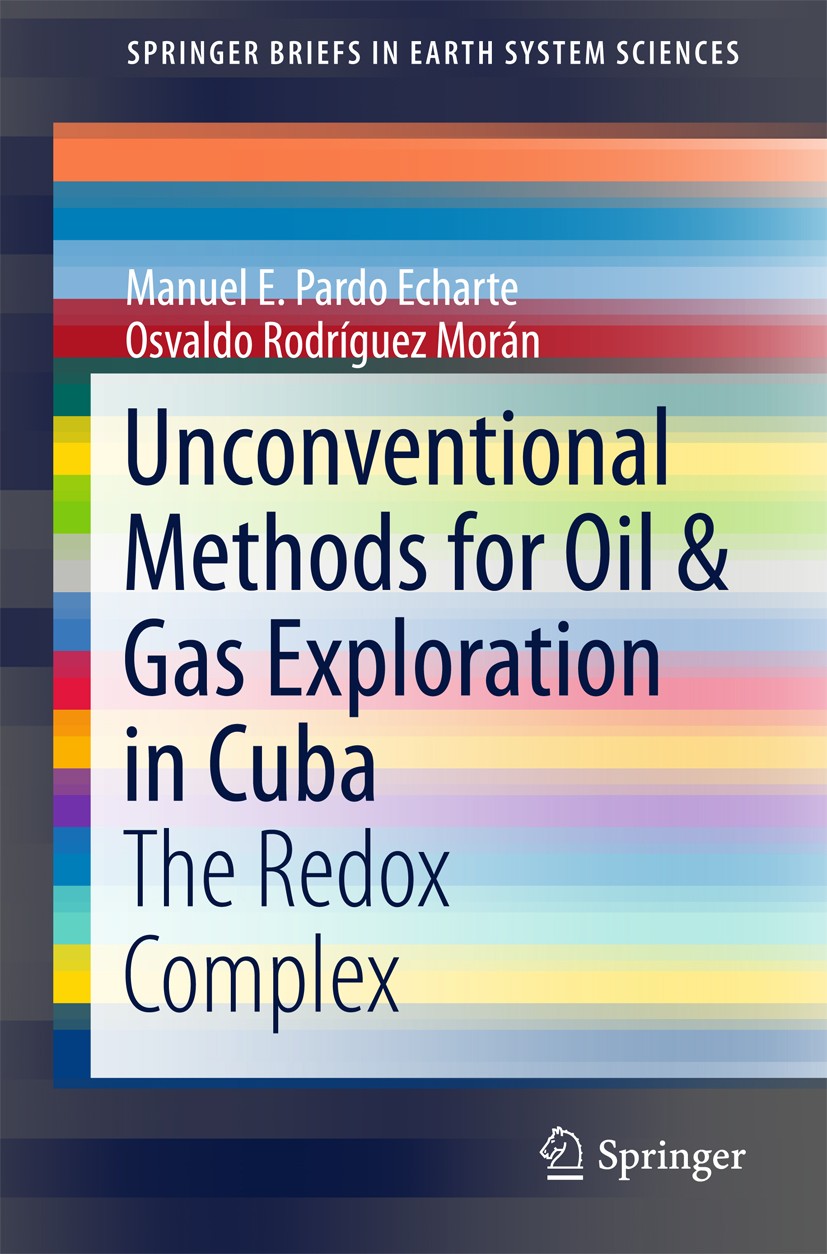| 书目名称 | Unconventional Methods for Oil & Gas Exploration in Cuba |
| 副标题 | The Redox Complex |
| 编辑 | Manuel E. Pardo Echarte,Osvaldo Rodríguez Morán |
| 视频video | http://file.papertrans.cn/942/941213/941213.mp4 |
| 概述 | Presents oils and gas.exploration techniques currently being employed in Cuba.Examines the Redox.Offers an insightfulguide for all those involved in oil, gas and mineral exploration.Includes supplemen |
| 丛书名称 | SpringerBriefs in Earth System Sciences |
| 图书封面 |  |
| 描述 | This book studies the “Redox Complex”, a complex of unconventional geophysical-geochemical exploration techniques used for the indirect detection, characterization and evaluation of various metal targets, while also illustrating selected applications of unconventional geophysical-geochemical methods for oil exploration in Cuba. This complex is successfully applied in various fields: oil & gas and metal ores exploration; studies of oil and metal contaminants in soils; and the search for metallic archaeological burials. The use of these techniques is intended to complement the conventional prospecting complex by reducing areas and/or facilitating the selection of the most favorable targets, improving the economical-geological effectiveness of investigations in the process. Further, the Redox Complex can be implemented without physical or chemical damage to the environment. .The book’s primary goals are to: 1) outline the general features characterizing the processes of metal mobilization, transport and accumulation on surficial media; 2) outline the methodology, data interpretation and mathematical apparatus that support quantitative estimates of the Redox Complex; and 3) desig |
| 出版日期 | Book 2016 |
| 关键词 | Buried Ore Bodies; Exploration; Hydrocarbon Deposits; Magnetic Susceptibility; Mobile Metal Ions; Redox C |
| 版次 | 1 |
| doi | https://doi.org/10.1007/978-3-319-28017-2 |
| isbn_softcover | 978-3-319-28015-8 |
| isbn_ebook | 978-3-319-28017-2Series ISSN 2191-589X Series E-ISSN 2191-5903 |
| issn_series | 2191-589X |
| copyright | The Author(s) 2016 |
 |Archiver|手机版|小黑屋|
派博传思国际
( 京公网安备110108008328)
GMT+8, 2025-12-17 22:49
|Archiver|手机版|小黑屋|
派博传思国际
( 京公网安备110108008328)
GMT+8, 2025-12-17 22:49


